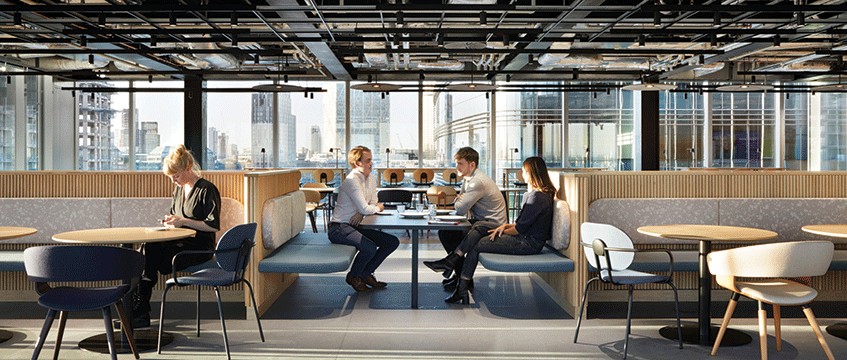How hybrid working made open-plan offices smarter than ever
COMMENT A new digital layer of interaction has been added to office life, with workplaces now freely connected to a wider network of homes and other workplaces.
Hybrid working is testing the sophistication and agility of our open-plan workspaces, with greater emphasis on bringing people together for collaborative working and creating more controlled spaces for focused work.
Without a high degree of care and thought, your open and bustling offices could easily interrupt your workplace culture, with Teams calls on floorplates and in meetings affecting wellbeing and productivity, not to mention creating privacy concerns.
COMMENT A new digital layer of interaction has been added to office life, with workplaces now freely connected to a wider network of homes and other workplaces.
Hybrid working is testing the sophistication and agility of our open-plan workspaces, with greater emphasis on bringing people together for collaborative working and creating more controlled spaces for focused work.
Without a high degree of care and thought, your open and bustling offices could easily interrupt your workplace culture, with Teams calls on floorplates and in meetings affecting wellbeing and productivity, not to mention creating privacy concerns.
The ability for workplaces to embrace change is nothing new; we have been seeing spaces prioritise agility for the past 10 years. However, since the pandemic, we have been in a period of accelerated change, which is putting the flexibility of our spaces through its paces. Our clients, both developers and occupiers, are now asking how we keep pace with change, especially when the future of how the office will evolve is far from certain.
Radical reinvention
Before the pandemic, some offices were primed for change, while others were vulnerable to it. At one end of the spectrum, there are offices that were designed pre-pandemic to flex in size and shape. These spaces, built on a solid strategy, will most likely need a recalibration rather than a major overhaul to get them ready for hybrid working. An evolutionary change we are seeing in already agile offices is a reduction in numbers of traditional desks. These are being replaced by more activity-driven spaces: private spaces for focused work and collaborative spaces that allow people to work side-by-side with colleagues and clients.
However, if you went into the pandemic with a more cellular approach to office floorplates, then more radical reinvention could be necessary. We work with many professional service clients, which have often favoured more fixed set-ups. They are finding it harder to embrace hybrid working.
On more siloed floorplates it is challenging to create an energetic atmosphere that attracts people back into the office. Without the opportunities to be together and collaborate, people often don’t see the value of commuting into the office.
However, even clients with more fixed offices are now recognising the impact of increased digital communication. More and more, traditional offices are having to become broadcasting environments, with the AV technology to support this to create digitally enabled spaces that are still people-centred.
These digital, hybrid environments should not come at the expense of wellbeing. It’s clear that the wellness agenda is no longer a nice-to-have, but essential to attract people back to the office. Our clients are very conscious that they don’t want hybrid working to disrupt the wellbeing of their staff.
Planning spaces
A key component of wellbeing is being able to concentrate without distractions, making acoustic performance a key component of a healthy hybrid office. The range of spaces should be carefully planned to ensure the fundamentally different characteristics between spaces to connect and spaces to concentrate don’t interfere with each other.
On open floorplates, the focus is on acoustic attenuation, with numerous ways of controlling the sound of a bustling office, including the careful selection of materials in the work settings and exposed ceilings, as well as use of pink noise to level out ambient noise of the floorplate.
When drawing up plans to address hybrid working, it’s important to remember we are speaking and designing for a particular moment in time, with ideas and spaces likely to continue to evolve quickly. Although we don’t have the data yet on how the hybrid office will evolve, we do know what the key components are to create a dynamic working culture that is attractive to people.
The challenge our industry faces is making these elements agile enough to move with the times, whether that be changing occupation rates, environmental targets, advances in technology or cultural requirements.
Helen Berresford is head of ID:SR
Image courtesy of ID:SR











